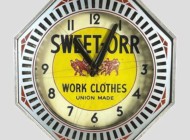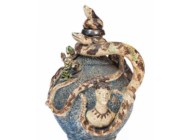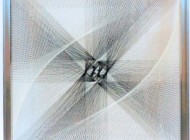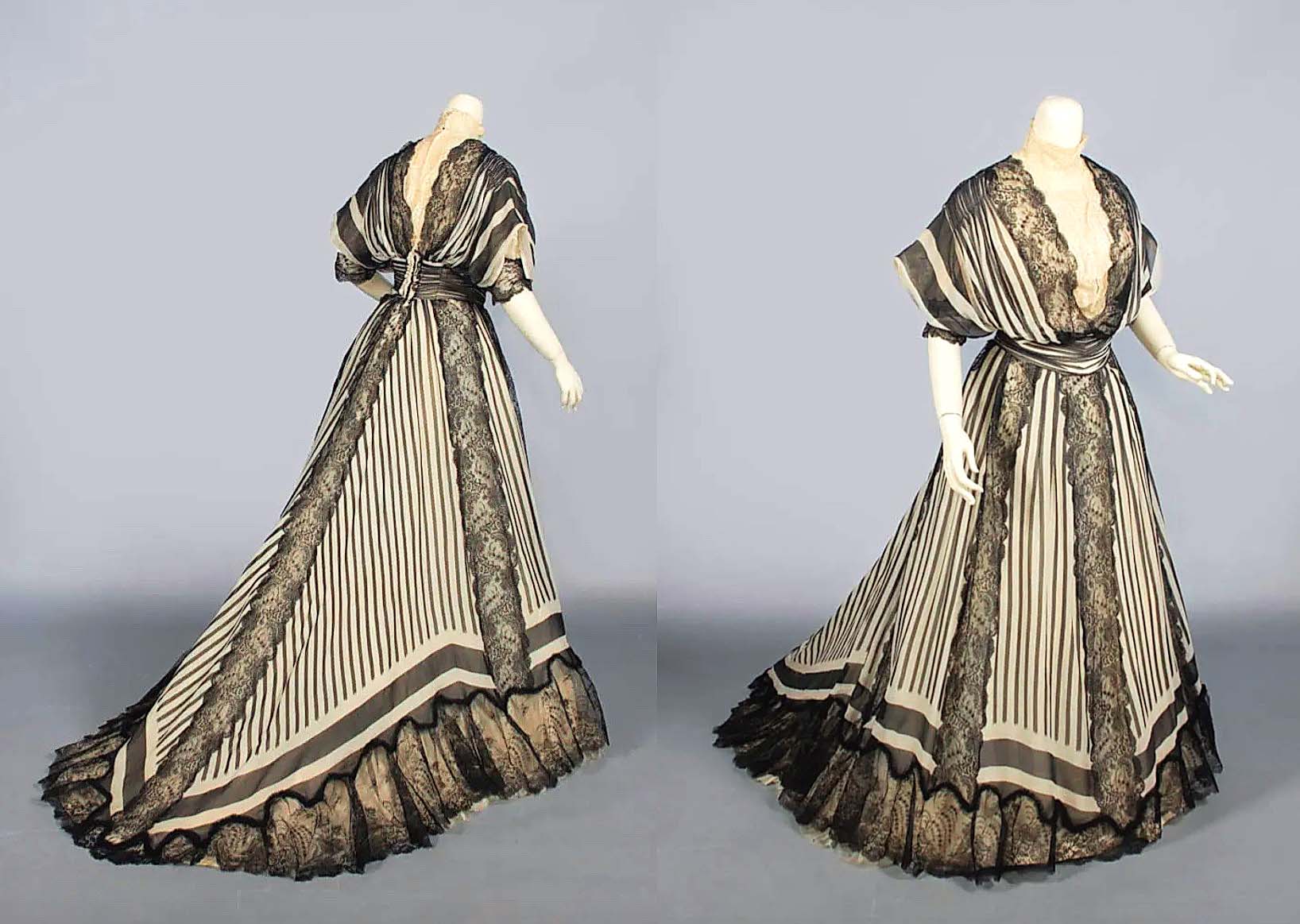
Worn about a year into a circa 1904 lady’s mourning period, this chiffon and lace gown from the House of Worth, Paris, led the auction at $20,625 ($5/8,000).
Review by Z.G. Burnett; Images Courtesy of Augusta Auctions
BELLOWS FALLS, VT. — Augusta Auctions’ Vintage For Valentines’ auction on February 14 caused some bidders to fall in love and others to leave with broken hearts. Antique and vintage garments from collections such as the Ohio State Historic Costumes & Textiles Collection, The Valentine Museum and the Museum of History and Industry (MOHAI). “We were pleased with the lively bidding between both public and private institutions within the states and abroad as well as a large number of avid collectors of couture, historical clothing and rare textiles,” said Julia Ricklis, vice president of sales. “The top lots were sold to bidders both domestic and international.”
First among these was a bittersweet example of turn-of-the-century fashion, a half mourning gown from the Paris atelier of Charles Frederick Worth (1825-1895), dated to around 1904. A year into about a two-year mourning period after the death of a loved one or close family member, women were permitted to shed their all-black attire for gray, white or lavender garments. This chiffon gown showed brush stroke vertical stripes and horizontal bands, bordered with black Chantilly lace woven in the 1860s. According to Ricklis, “…the Worth [is] leaving the country for the first time since it entered the MOHAI collection in 1957,” and was bid to $20,625.
Parisian couture always draws interest, and this auction offered not one but two 1950s pieces from Christian Dior. First in price at $4,375 was a black satin party dress resist-printed with blue carnations in “very good” condition. It showed a bateau neckline with a plunging “V” indicating a bow on the front of the dress’ nipped waist, which then flourished into a full box pleated skirt lined with organza. Second was a black wool Dior jacket in “good” condition that achieved $2,063. The dress and jacket exemplified the ultra-feminine “New Look” silhouette popularized by Dior following the scarcity measures of the fashion industry in World War II.
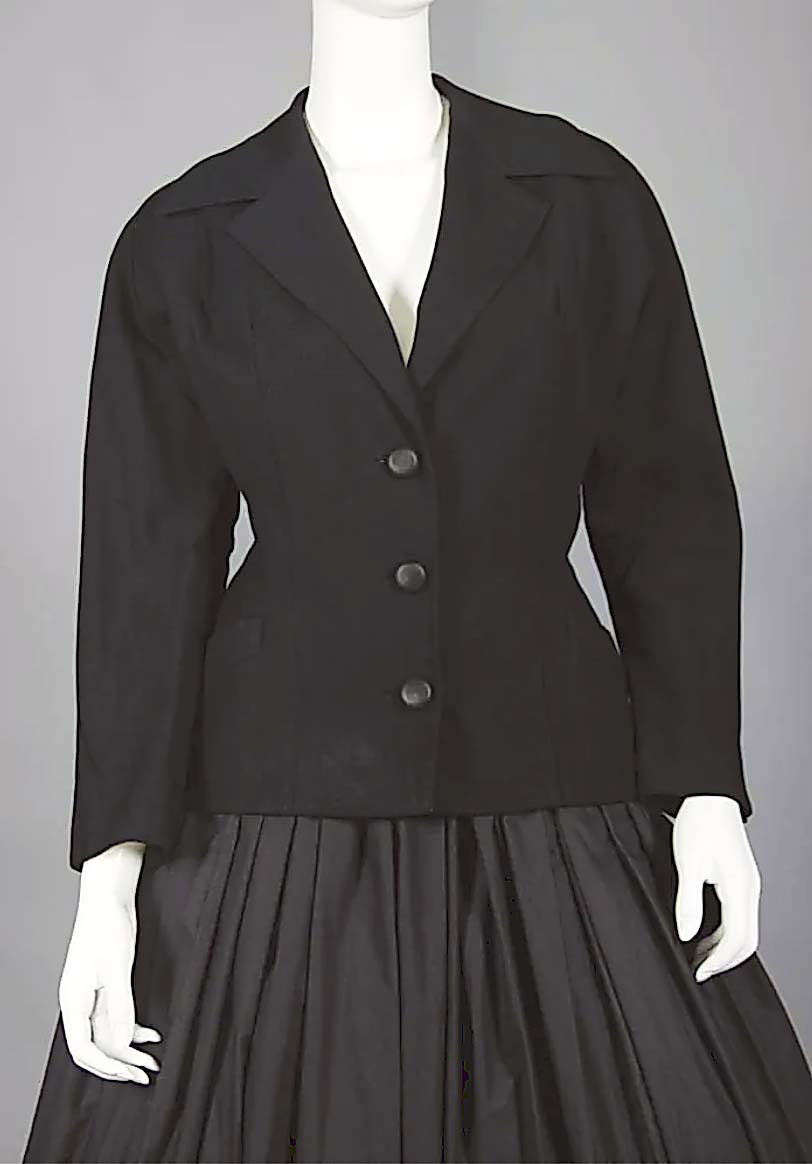
Known for its prominence in the “New Look” movement, this example of Christian Dior’s couture black wool jacket was cut to emphasize the wearer’s waist and sold for $2,063 ($800-$1,200). It was often paired with a full black skirt, though that which is pictured was not included in the sale.
In colorful contrast to these high fashion garments, two group lots of early Twentieth Century ikat and brocade textiles from Malaysia and Sumatra found favor with top bidders. Second in the overall auction was a lot of three pieces that were bid to $8,438. These included one Sumbanese warp ikat from Indonesia, another warp ikat from Flores, Indonesia, and one inlaid brocade from Sarawak, Malaysia. Following this in price was a lot of two Sumatran weft brocade cotton textiles in varied condition, on cotton and including metallic thread, at $1,875. These lots were consigned by the Ohio State Historic Costumes & Textiles Collection.
Flowy silhouettes were also popular at this auction. An evening coat from Madame Jenny (also known as Jenny Sacerdote, born Jeanne Adèle Bernard 1868-1962) came in third at $5,000. The silk fabric of the free front coat with hanging sleeves showed a Byzantine rondel motif on a diagonal grid, encrusted with short crystal bugle beads, along with green and red rhinestones that extended onto gold lamé borders with an embroidered imitation of woven motif. Made for the “demi-saison” in November 1927, the coat showed labels from the designer’s Parisian atelier and from the Marshall Field Company’s Coat & Wraps Department.
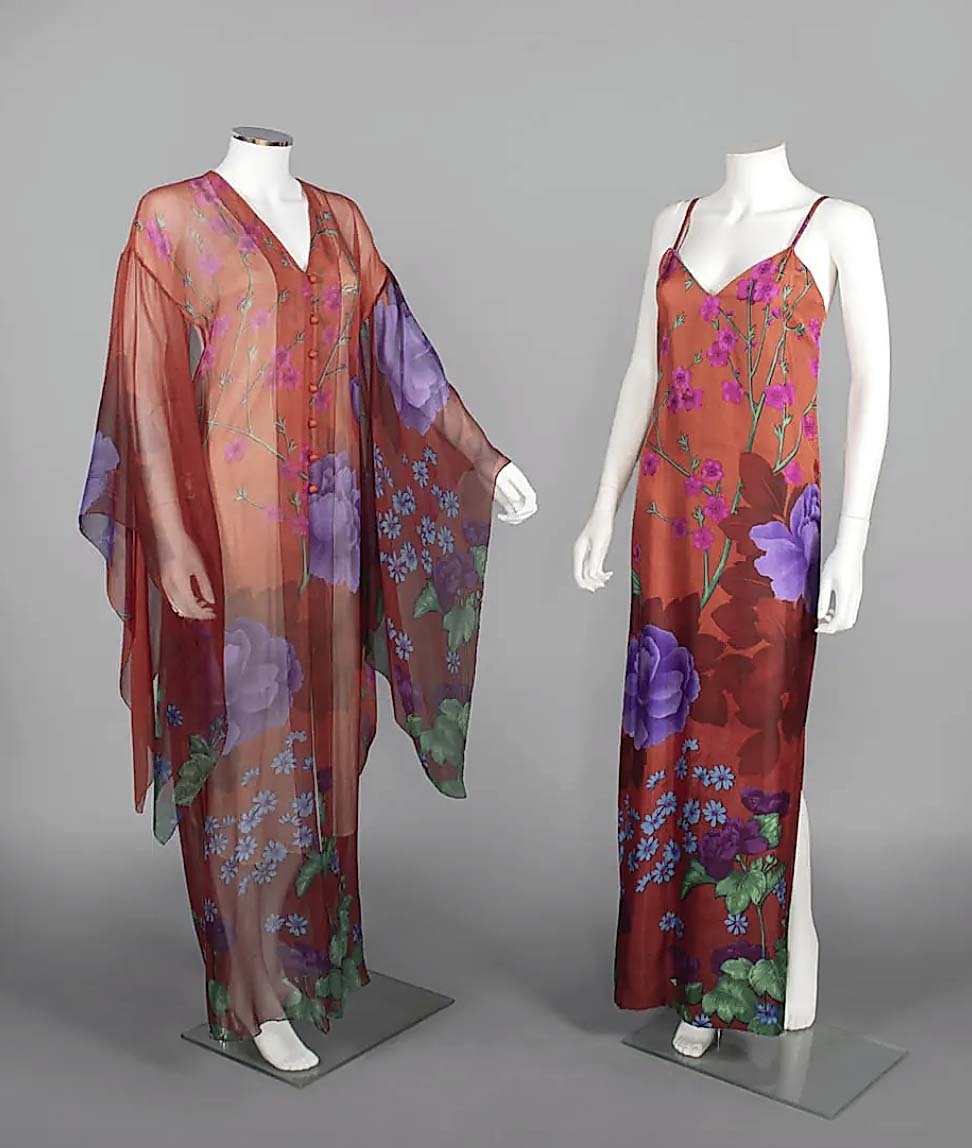
This two-piece silk and chiffon evening ensemble from leading Japanese couture label, Hanae Mori achieved $2,750 ($500/800).
Fifty years newer, another lot of evening wear showed a similar silhouette but with a much different origin. A two-piece evening ensemble by Japanese label Hanae Mori consisted of a silk twill shift dress with a translucent chiffon kimono-like overdress, each printed with chrysanthemum, lotus and cherry blossom motifs. Hanae Mori (1926-2022) was the first woman of Asian descent whose label was admitted as an haute couture design house by the French Federation of Couture, and one of only two Japanese women whose lines have been shown at New York and Paris Fashion Week. This ensemble, which dates from the 1970s, was bid to $2,750.
One garment in the auction was unlike any others: an American cotton “Womanall” one-piece work uniform, made circa 1918. Workwear from the late Nineteenth and early Twentieth Centuries is highly prized by a certain sect of vintage enthusiasts, even if it’s full of holes. This one-piece uniform was deaccessioned by The Valentine Museum to benefit collections care and was in “very good” condition.
From the same era was an evening dress that followed the uniform in price but was completely opposite in function. The circa 1913 silk moiré dress had a “hobble” skirt; this style was so named because of its narrow hem, which impeded the wearer’s stride so much that they seemed to be hobbling. Trimmed with leavers lace on the bodice and hips, the delicate dress showed signs of wear and was in “fair-good” condition. Also from the Valentine collection, it achieved $3,000.
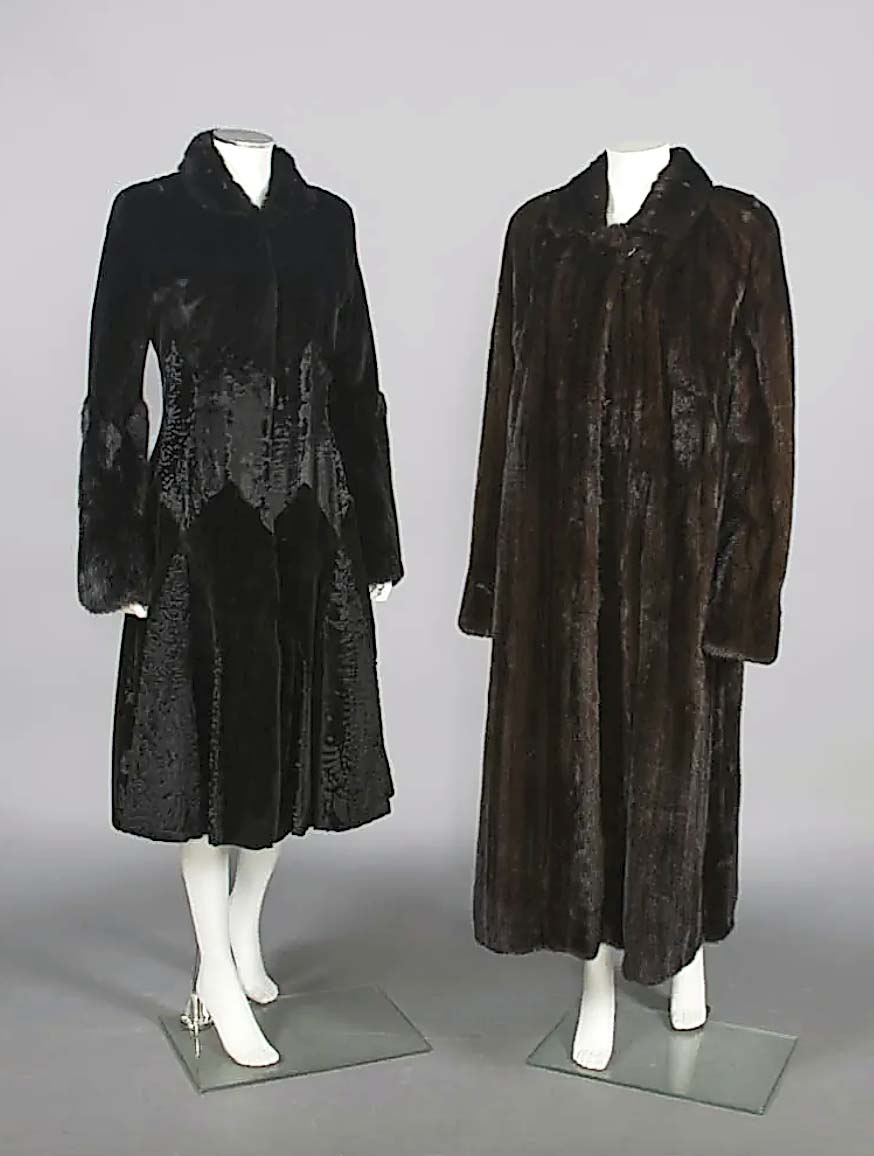
Although the winning bidder may have to mind where they wear these vintage fur coats from Dennis Basso and Goldin Feldman, they saved two beautiful pieces from the landfill for $1,938 ($400/600).
Outerwear also did well. Fur is pooh-poohed nowadays and is quickly disappearing from retailers, but what to do with the perfectly good coats that survive? Two examples from the 1970s and 1980s presented this question, and buyers responded by raising the bidding to $1,938. One of these was a sable, astrakhan and sheared beaver pieced coat from Dennis Basso, still in operation, and the other was a ranch mink coat from Goldin Feldman, which closed in 2006.
Less controversial was an earlier wool cape designed by Gilbert Adrian in the 1940s. This would be a pivotal time for the designer, as he left a decade-long tenure as the director of MGM’s costume department after the retirement of Greta Garbo. During this time, he designed all of a movie’s costumes, from the extras to the headline star. Adrian is responsible for each of the costumes in The Wizard of Oz (1939), as well as Hedy Lamarr’s sparkling gown and crown in Ziegfeld Girl (1941). After he left MGM, Adrian opened his own clothing store in Beverly Hills despite the oncoming war. This privately commissioned silk-lined tiered cape characterizes how Adrian redefined glamor. It went to its next owner for $1,813.
Prices quoted with buyer’s premium as reported by the auction house. For information, www.augusta-auction.com or 803-463-3333.

















